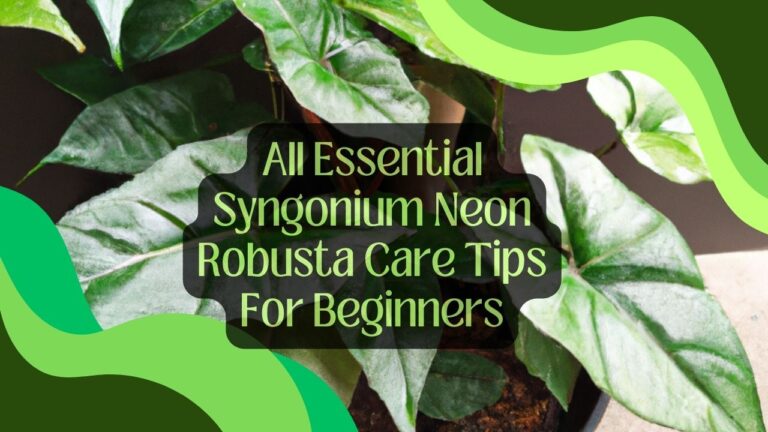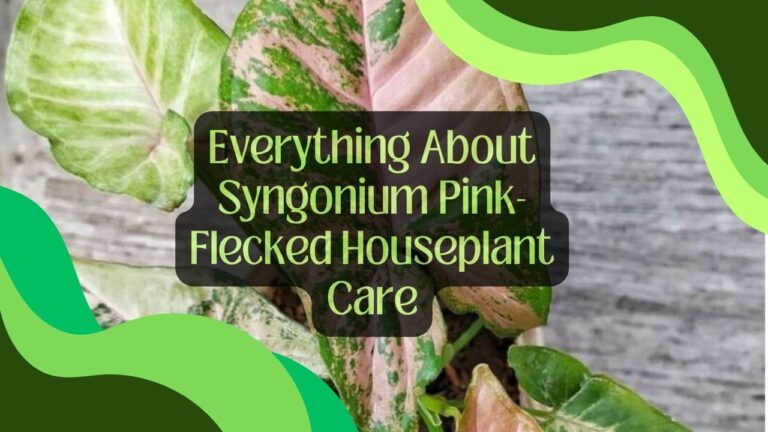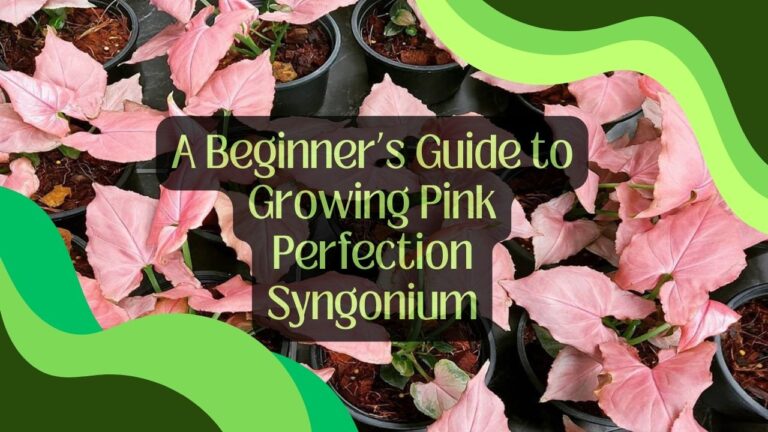How to Recognize and Treat Aloe Vera Pests?
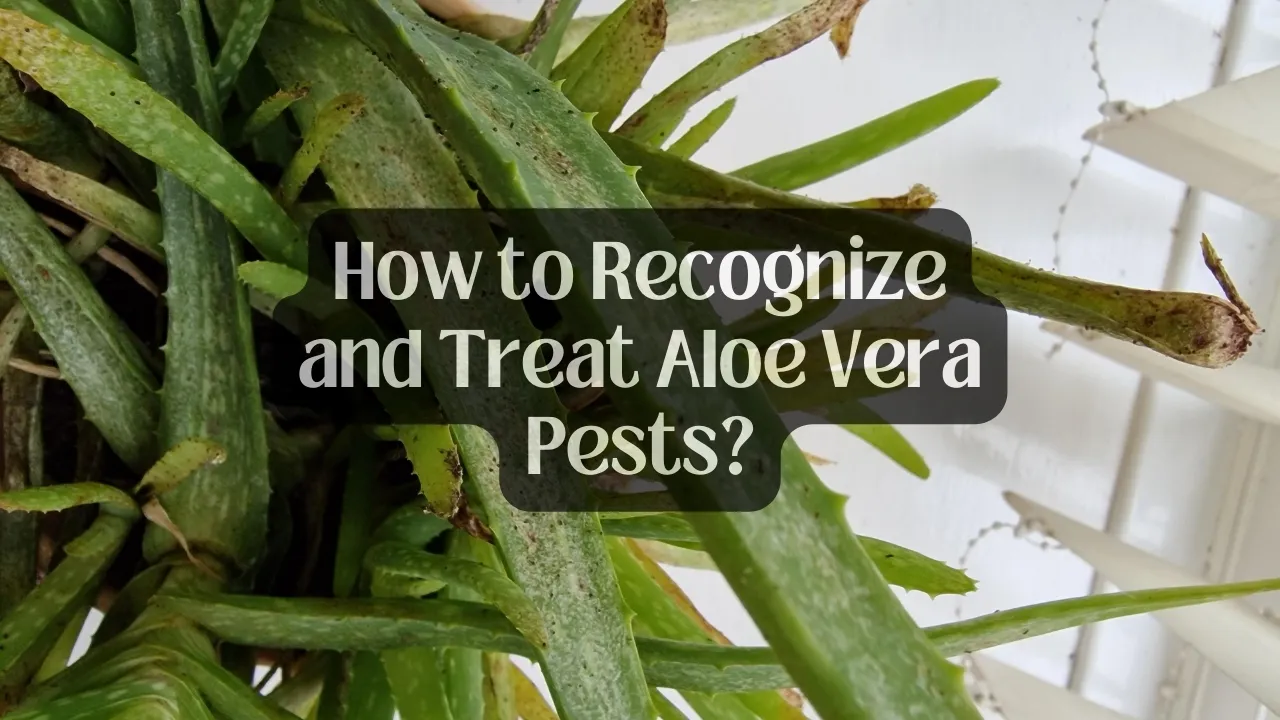
Are your aloe plants looking a bit under the weather? Those hardy succulents might be facing some unwelcome visitors. Yes, you got it right, these are pests!
But, how to recognize and treat Aloe vera pests? To recognize and treat Aloe vera pests, watch for signs like tiny pale spots, dark puncture marks, crooked flowers, or black stem spots. Most pests can be treated with insecticide powder or spray. Proper watering prevents fungus gnats, while pruning helps with stem rot. Use sulfur powder or baking soda for rust, and wash leaves to remove sooty mold.
Let’s dive into the world of aloe pests and learn how to keep your plants happy and healthy.
Table of Contents
7 Aloe Vera Pests And How to Recognize These
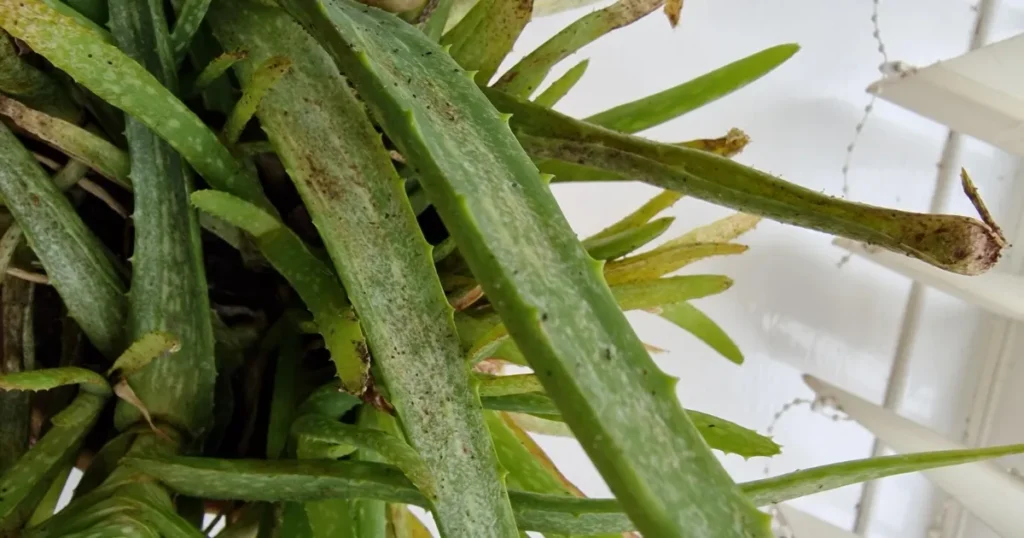
In this section, we’ll learn about several common pests that your Aloe vera may have. To maintain your plants’ long-term health, these pests must be removed. Let’s take a look at the pests, and how to get rid of all these.
1. Spider Mites
Ever noticed small, pale spots on your aloe leaves? You might be dealing with red spider mites. These tiny troublemakers love to munch on aloe, leaving their mark as they go. If left unchecked, they can even mess with your plant’s flowers.
But don’t worry! A simple sprinkle of insecticide powder in the center of your plant can stop these mites in their tracks. Most insecticide sprays work well too.
2. Snout Beetles
Meet the aloe’s arch-nemesis: the snout beetle. These little guys, about the size of your pinky nail, are bad news for your plants. They squeeze between the leaves to drink the sap, leaving dark spots behind.
Here’s the real problem: after they mate, they lay eggs at the base of the leaves. The baby beetles then burrow into the stem, slowly killing the plant from the inside.
What can you do? If you catch them early, simply remove the beetles by hand or use insecticide powder. For bigger infestations, you might need to cut away the affected parts and try to save what’s left.
3. Gall Mites
If you see crooked flower clusters or strange, frilly growths on your aloe, you might have gall mites. These tiny pests cause a condition called gall cancer, which can spread to other plants if not treated.
The fix? Cut away the funky-looking parts with a sharp blade, then treat the cut with a strong insecticide. Don’t forget to spray the whole plant a day or two later.
4. Gnats
Seeing small flies buzzing around your aloe? Those are probably fungus gnats. The good news is they’re easy to get rid of – just let your soil dry out between waterings. These pests love wet soil, so keeping things on the dry side will send them packing.
5. Basal Stem Rot
If you see black or reddish-brown spots on your aloe’s stem, you might be dealing with basal stem rot. This nasty disease happens when aloes get too cold and wet.
Sadly, once rot sets in, it’s hard to stop. Your best bet is to cut off any healthy parts above the rot and try to root them. To prevent this in the future, make sure your aloes have good drainage and don’t get too wet or cold.
6. Aloe Rust
Notice dark, circular spots on your aloe leaves? That might be aloe rust, a fungal infection that makes leaves look, well, rusty. The good news is it won’t kill your plant, and new growth will be rust-free.
To prevent rust, keep leaves dry and make sure there’s good air flow around your plants. You can also dust your aloes with sulfur powder every couple of weeks or spray them with a mix of baking soda and water.
7. Sooty Mold
If your aloe leaves look like they’ve been dusted with soot, you’re dealing with sooty mold. This fungus grows on the sticky “honeydew” left behind by pests like aphids and mealybugs.
The mold itself isn’t too harmful, but it’s a sign you’ve got other pests to deal with. Wash off the mold and honeydew, then tackle the real culprits – those sap-sucking bugs.
The following YouTube video will help you have extended ideas about this matter.
How to Prevent Pests in Aloe Vera Plants?

The best way to deal with pests is to stop them before they start. Here are some tips to keep your aloes healthy:
- Ensure proper take care of your Aloe vera.
- Don’t overwater. Most aloe problems start with too much water.
- Give your plants plenty of light and airflow.
- Check your plants regularly for signs of pests or disease.
- Keep your growing area clean. Remove dead leaves and flowers promptly.
- If you bring home a new plant, keep it separate from your others for a while to make sure it’s pest-free.
FAQs
Have more questions in mind? Check the Q&A section to get more ideas about treating aloe vera pests.
Q: Can I use natural predators to control aloe pests?
A: Yes, you can! Ladybugs and lacewings are natural enemies of many aloe pests. Introducing these beneficial insects to your garden can help keep pest populations in check without using chemicals.
Q: Is it safe to use neem oil on my aloe plants?
A: Neem oil is generally safe for aloes when used correctly. It’s an organic option that can help control various pests. However, always do a patch test first and avoid applying during hot, sunny days to prevent leaf burn.
Q: What’s the best way to quarantine a new aloe plant?
A: Keep new plants separate for about 2-3 weeks. Place them in a well-lit area away from other plants, and check regularly for signs of pests or disease before introducing them to your main collection.
Q: Are there any aloe varieties that are more pest-resistant?
A: While no aloe is completely pest-proof, some varieties like Aloe arborescens and Aloe ferox are known to be more resilient. However, good care practices are still essential for any variety.
Conclusion
Aloe vera plants are great, but they can attract pests like mites, beetles, and fungus gnats. These pests can damage your plant or even kill it. The good news is you can fight back!
Just inspect your plants regularly and use simple methods like spraying or sprinkling. So that, you can keep your aloe vera happy and healthy.
Remember, prevention is key: proper watering, good airflow, and clean growing spaces will make your aloes less inviting to pesky visitors.


